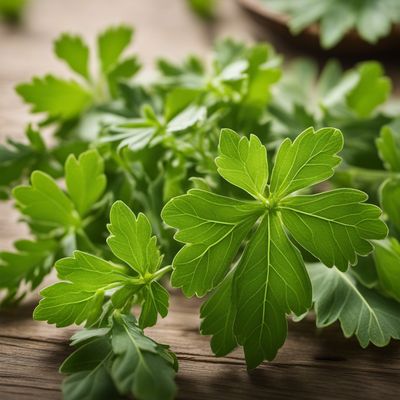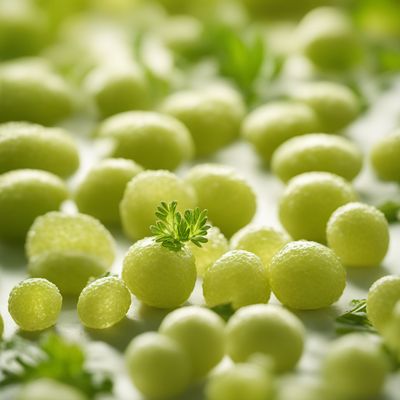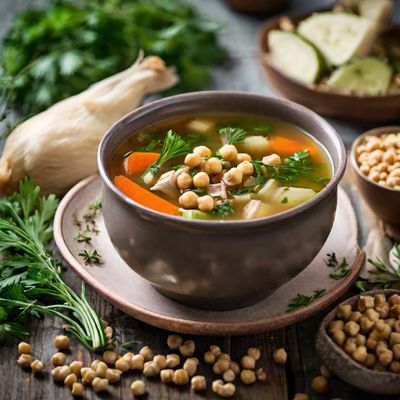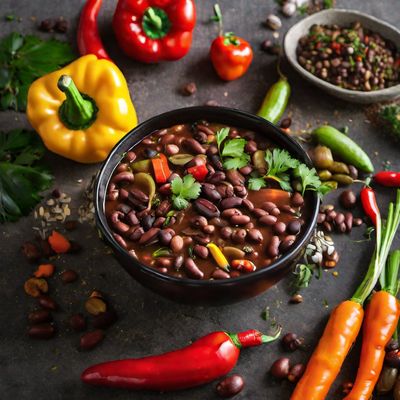
Ingredient
Bay leaves, dry
Aromatic Leaf of Flavor
Bay leaves are dried leaves from the bay laurel tree and are known for their distinctive aroma and flavor. They are commonly used in soups, stews, and various slow-cooked dishes to add depth and complexity.
Origins and history
Bay leaves have a long history and were highly regarded by ancient Greeks and Romans. They were believed to have protective properties and were used in various rituals. Today, they are cultivated in many countries and are an essential ingredient in Mediterranean and Indian cuisines.
Nutritional information
Bay leaves are not consumed in large quantities, so their nutritional value is minimal. However, they do contain vitamins A and C, as well as minerals like calcium and iron.
Allergens
There are no known allergens associated with bay leaves.
How to select
When selecting bay leaves, look for whole leaves that are intact and free from any signs of mold or damage. The leaves should have a deep green color and a strong aroma. Avoid leaves that are pale or brittle.
Storage recommendations
To preserve the flavor of bay leaves, store them in an airtight container in a cool, dark place. Avoid exposing them to heat or moisture, as this can diminish their potency.
How to produce
Bay laurel trees can be grown in containers or in the ground, but they require a Mediterranean-like climate to thrive. They prefer well-drained soil and full sun. It is best to purchase dried bay leaves from reputable sources rather than attempting to grow the tree for personal use.
Preparation tips
Bay leaves are typically used whole and are added to dishes during cooking. They are often used in stocks, soups, and braised meats to infuse a subtle herbal flavor. Remember to remove the bay leaves before serving, as they can be tough and unpleasant to eat.
Culinary uses
Bay leaves are commonly used in Mediterranean, Indian, and Caribbean cuisines. They are a key ingredient in dishes like bouillabaisse, biryani, and jerk chicken.
Availability
Bay leaves are cultivated in countries such as Turkey, Morocco, and India.
More ingredients from this category » Browse all

Lovage, dry
The Aromatic Herb: Lovage

Sweet cicely, dry
The Delicate Herb: Sweet Cicely

Wormwoods, dry
The Bitter Herb: Wormwoods

Mints, dry
The Versatile Herb: Unlocking the Aromatic Power of Dry Mints

Basil, dry
The Fragrant Herb: Dried Basil

Angelica, dry
The Heavenly Herb: Unveiling the Secrets of Dry Angelica

Rue, dry
The Bitter Herb: Unveiling the Secrets of Dry Rue

Borage, dry
The Vibrant Herb of Delight

Sage, dry
The Timeless Herb: Unveiling the Versatility of Dry Sage

Hyssop, dry
The Aromatic Herb: Unveiling the Secrets of Dry Hyssop

Lavender, dry
The Fragrant Herb: Lavender

Fennel, dry
The Fragrant Spice of the Mediterranean
Recipes using Bay leaves, dry » Browse all

Sopa de Pollo y Fideos (Chicken and Noodle Soup) Adapted for Latvian Cuisine
Latvian-style Chicken and Noodle Soup: A Hearty Delight for Chilly Days

Feijoada - Authentic Brazilian Black Bean Stew
Sabor Latino: Delicioso Feijoada - A Taste of Latin America

Tagliatelle al ragù alla Bolognese
Turkish-style Tagliatelle with Bolognese Sauce

Mediterranean Chicken and Noodle Soup
Mediterranean Delight: A Twist on Chicken Noodle Soup

Sopa de Pollo y Fideos Adapted to Nouvelle Cuisine
Elevated Chicken Noodle Soup: A Nouvelle Cuisine Twist

Vegan Chickpea Soup
Savory and Nourishing Vegan Chickpea Soup

Beef Bourguignon - Croatian Style
Dalmatian Beef Stew

Mexican Feijoada
Feast on Mexican Feijoada: A Hearty and Flavorful Delight

Sopa de Pollo et Nouilles
French-inspired Chicken and Noodle Soup

Argentinian Gumbo
Tango-inspired Gumbo: A Spicy Dance of Flavors

Vegan Feijoada
Plant-Based Twist on a Brazilian Classic: Vegan Feijoada

Tagliatelle au ragù à la Bolognaise
Délicieuses Tagliatelles au ragù à la Bolognaise